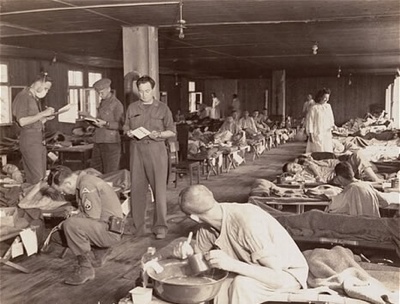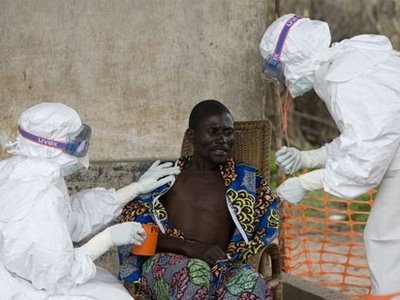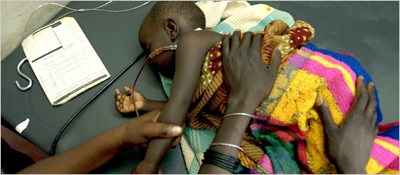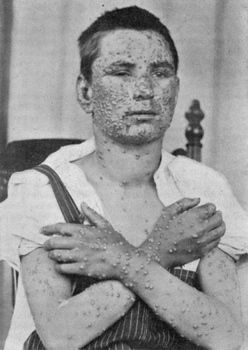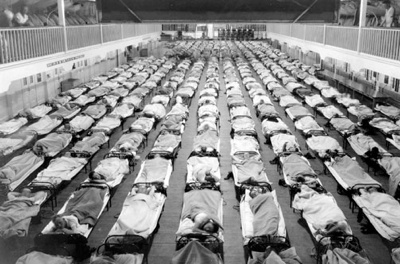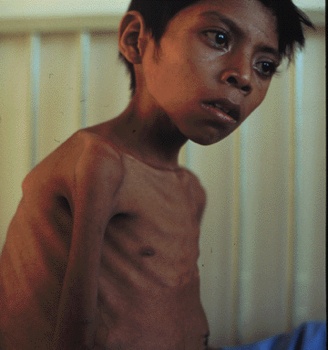 Our World
Our World  Our World
Our World  Movies and TV
Movies and TV The 10 Coolest Stars to Set Sail on The Love Boat
 History
History 10 Things You Didn’t Know About the American National Anthem
 Technology
Technology Top 10 Everyday Tech Buzzwords That Hide a Darker Past
 Humans
Humans 10 Everyday Human Behaviors That Are Actually Survival Instincts
 Animals
Animals 10 Animals That Humiliated and Harmed Historical Leaders
 History
History 10 Most Influential Protests in Modern History
 Creepy
Creepy 10 More Representations of Death from Myth, Legend, and Folktale
 Technology
Technology 10 Scientific Breakthroughs of 2025 That’ll Change Everything
 Our World
Our World 10 Ways Icelandic Culture Makes Other Countries Look Boring
 Our World
Our World 10 Ways Your Christmas Tree Is More Lit Than You Think
 Movies and TV
Movies and TV The 10 Coolest Stars to Set Sail on The Love Boat
 History
History 10 Things You Didn’t Know About the American National Anthem
Who's Behind Listverse?

Jamie Frater
Head Editor
Jamie founded Listverse due to an insatiable desire to share fascinating, obscure, and bizarre facts. He has been a guest speaker on numerous national radio and television stations and is a five time published author.
More About Us Technology
Technology Top 10 Everyday Tech Buzzwords That Hide a Darker Past
 Humans
Humans 10 Everyday Human Behaviors That Are Actually Survival Instincts
 Animals
Animals 10 Animals That Humiliated and Harmed Historical Leaders
 History
History 10 Most Influential Protests in Modern History
 Creepy
Creepy 10 More Representations of Death from Myth, Legend, and Folktale
 Technology
Technology 10 Scientific Breakthroughs of 2025 That’ll Change Everything
 Our World
Our World 10 Ways Icelandic Culture Makes Other Countries Look Boring
10 Illnesses And Their Effects On History
WARNING: some images may be disturbing. The history books are full of accounts of dreadful plagues and diseases which wiped out large numbers of peoples (sometimes by their millions). This list takes a look at 10 of the more well known and interesting diseases and looks at their effect on history (either through high death toll or changes to the way we deal with the sick). Feel free to mention other interesting illnesses in the comments. This list is no particular order.
Typhus is any of several similar diseases caused by Rickettsiae. The name comes from the Greek typhos meaning smoky or hazy,describing the state of mind of those affected with typhus. The first reliable description of the disease appears during the Spanish siege of Moorish Granada in 1489. These accounts include descriptions of fever and red spots over arms, back and chest, progressing to delirium, gangrenous sores, and the stink of rotting flesh. During the siege, the Spaniards lost 3,000 men to enemy action but an additional 17,000 died of typhus. Epidemics occurred throughout Europe from the 16th to the 19th centuries, and occurred during the English Civil War, the Thirty Years’ War and the Napoleonic Wars. In the Thirty Years’ War, an estimated 8 million Germans were wiped out by bubonic plague and typhus fever. During Napoleon’s retreat from Moscow in 1812, more French soldiers died of typhus than were killed by the Russians.
Ebola hemorrhagic fever is named after the Ebola River, where the first recognized outbreak of the fever occurred. The viruses are characterized by long filaments, and have a shape similar to that of the Marburg virus, also in the family Filoviridae, and possessing similar disease symptoms. Ebola first emerged in 1976 in Zaire. It remained largely obscure until 1989 with the outbreak in Reston, Virginia. The virus has been confirmed to be transmitted through body fluids, however, transmission through oral exposure and through conjunctiva exposure is possible. In the early stages, Ebola may not be highly contagious. Contact with someone in early stages may not even transmit the disease. As the illness progresses, bodily fluids from diarrhea, vomiting, and bleeding represent an extreme biohazard. Due to lack of proper equipment and hygienic practices, large-scale epidemics occur mostly in poor, isolated areas without modern hospitals or well-educated medical staff.
Some symptoms of malaria are anemia, fever, chills, and even coma or death. This disease is usually spread when people are bitten by an Anopheles mosquito, which got the infection from another human. Every year, there are about 400 million cases of malaria, killing millions of people. This disease is one of the most common infectious diseases, and a serious problem. Currently, no vaccine that has huge impact has been created, but many are being invented.
In its most severe form cholera is very fatal. If not treated within three hours, an infected person may die. Symptoms are diarrhea, shock, nosebleed, leg cramps, vomiting, and dry skin. The first cholera outbreak was in Bengal, and from there spread to India, China, Indonesia, and the Caspian Sea. When the pandemic finally ended in 1826, there were over 15 million deaths in India alone. Oral rehydration therapy and antibiotics treat cholera.
Smallpox is believed to have begun infecting humans in 10,000 B.C. In England during the 18th century this disease killed around 400,000 people each year and was responsible for a large portion of blindness. The main symptom is an outbreak of small bumps all over the body. Other signs include vomiting, back ache, fever, and head ache. The earliest evidence of small pox was in Ancient Egyptian mummies. It is thought that Egyptian traders brought the disease over to India, where it remained endemic for 2000 years. After successful vaccination campaigns throughout the 19th and 20th centuries, the WHO certified the eradication of smallpox in December 1979. To this day, smallpox is the only human infectious disease to have been completely eradicated.
The 1918 flu pandemic (commonly referred to as the Spanish flu) was an influenza pandemic that spread to nearly every part of the world. It was caused by an unusually virulent and deadly Influenza A virus strain of subtype H1N1. Historical and epidemiological data are inadequate to identify the geographic origin of the virus. Most of its victims were healthy young adults, in contrast to most influenza outbreaks which predominantly affect juvenile, elderly, or otherwise weakened patients. The pandemic lasted from March 1918 to June 1920, spreading even to the Arctic and remote Pacific islands. It is estimated that anywhere from 20 to 100 million people were killed worldwide, or the approximate equivalent of one third of the population of Europe. Interestingly, the Spanish flu comes from the same subtype (Influenza A virus subtype H1N1) as Swine flu.
Yellow fever’s symptoms are things such as fever, chills, slow heartbeat, nausea, vomiting, and constipation. The WHO estimated that this disease causes around 30,000 deaths every year, when left unvaccinated. A famous outbreak of yellow fever was in Philadelphia, Pennsylvania in 1793. The illness killed as many as 10,000 people in Philadelphia alone. Most of the population fled the city, including the president. But, the mayor stayed and life and order were soon restored. Pictured above is a yellow fever quarantine station.
Tuberculosis, or “consumption” as it was commonly known, caused the most widespread public concern in the 19th and early 20th centuries as an endemic disease of the urban poor. In 1815, one in four deaths in England was of consumption; by 1918 one in six deaths in France were still caused by TB. In the 20th century tuberculosis killed an estimated 100 million people. TB is an often deadly disease that normally affects the lungs. Symptoms are coughing, weight loss, night sweats, and blood tinged sputum. Skeletal remains show that people back in 7000 B.C. were infected with TB.
Polio is highly contagious. It is a disease that affects the central nervous system and spine, sometimes leaves the victim paralyzed. Symptoms are headache, neck, back, and abdominal pain, vomiting, fever, and irritability. In 1952, an outbreak in the United States left over 20,000 children paralyzed and over 3,000 dead. Since then a vaccine has been created and most children are protected.
Swollen lymph glands, skin turning red then black, heavy breathing, aching limbs, blood vomiting, and horrible pain are some of the symptoms. The pain is caused by the rotting/decaying of the flesh. All together this illness has caused over 200 million deaths. Perhaps the most famous and horrible pandemic was in Europe in the late 1300s. It was known commonly as the Black Death. This incident almost halved the population of Europe. The bubonic plague is caused normally by the bite of an infected flea. Now, in modern times, several vaccines have been created, and people infected now are treated and cured. Pictured above is a man who suffered bubonic plague during the outbreak in Algeria in 2003.
